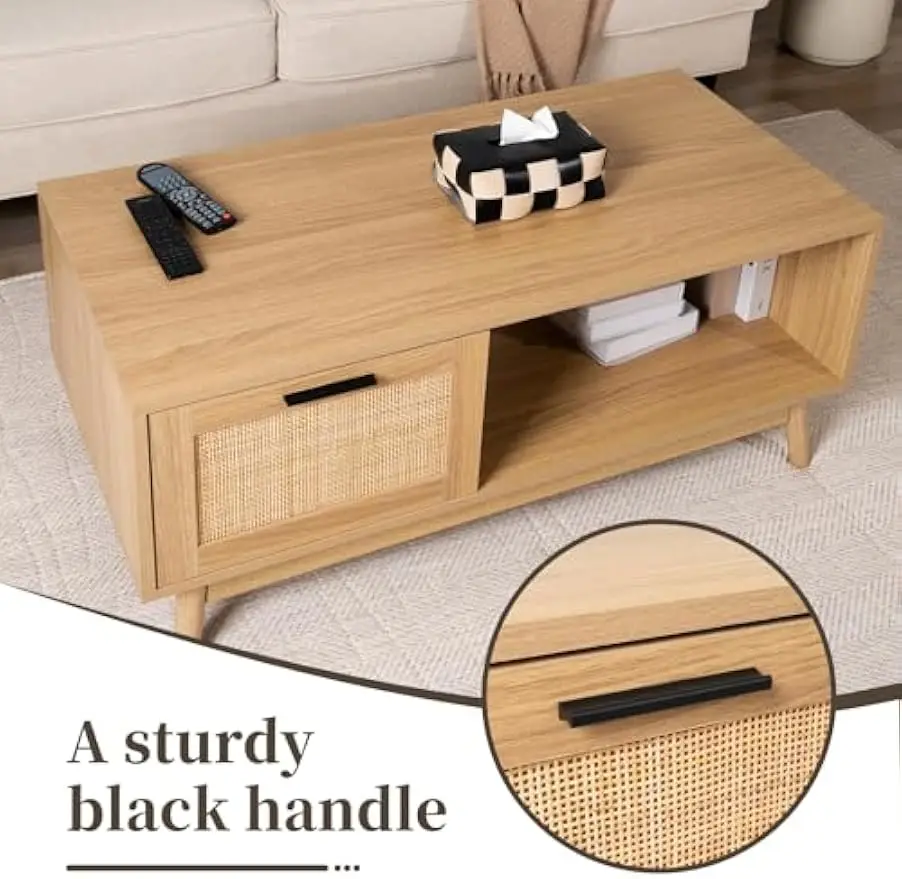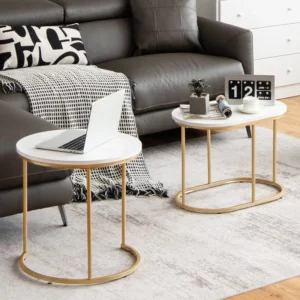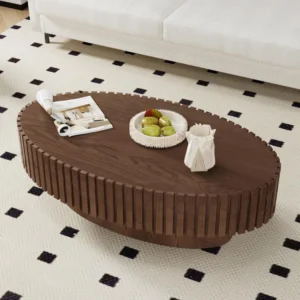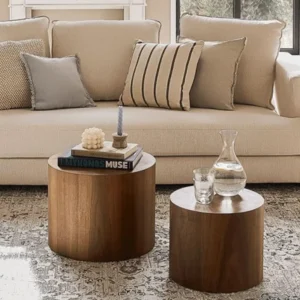Introduction: Why Danish Coffee Tables Define Modern Minimalist Living
When it comes to creating a truly minimalist living space, few furniture pieces embody the perfect balance of form and function quite like Danish coffee tables. These iconic pieces represent the essence of Scandinavian design philosophy—clean lines, natural materials, and a commitment to craftsmanship that stands the test of time.
Danish coffee tables aren’t simply furniture; they’re quiet statements of design intention that bring warmth and purpose to minimalist interiors. The timeless appeal of these pieces stems from their remarkable ability to appear both contemporary and classic simultaneously, functioning as practical centerpieces while maintaining visual lightness in any space.
The mid-century modern movement’s influence continues to resonate in today’s interiors, with Danish-inspired coffee table designs providing the perfect foundation for minimalist homes that value both beauty and utility. The enduring popularity of these pieces speaks to their versatility and inherent ability to adapt to changing design trends while maintaining their distinctive character.
In the following sections, we’ll explore the defining elements of Danish coffee tables, showcase inspiring ways to incorporate them into minimalist spaces, and provide practical guidance on selecting the perfect piece for your home. From material selection to styling techniques, you’ll discover why these Danish modern coffee table elements continue to define sophisticated interiors around the world.
The Essential Principles of Danish Coffee Table Design
At the heart of every authentic Danish coffee table lies a set of fundamental design principles that have guided Scandinavian furniture makers for generations. These principles aren’t merely aesthetic guidelines—they represent a deeper philosophy about how objects should function within our living spaces.
The quintessential “form follows function” approach drives key characteristics of Danish coffee tables, where every element serves a purpose. This design ethos prioritizes:
- Clean, uninterrupted lines that create visual harmony
- Organic shapes that feel natural to the human body and hand
- Visual lightness achieved through thoughtful proportions
- Exceptional craftsmanship that eliminates unnecessary ornamentation
- Materials chosen for their inherent beauty and durability
What makes Danish coffee tables particularly suitable for minimalist homes is their ability to combine practicality with subtle elegance. The emphasis on quality materials—particularly mid-century modern solid wood coffee tables crafted from oak, teak, or walnut—ensures each piece develops character over time rather than deteriorating.
Perhaps most importantly, Danish design embraces the concept of “hygge” (pronounced hoo-ga)—a Danish word describing a quality of coziness and comfortable conviviality that engenders feelings of contentment. This philosophy manifests in furniture that balances visual restraint with tactile warmth, ensuring minimalist spaces remain inviting rather than austere.
Visual Inspiration: Danish Coffee Tables in Contemporary Minimalist Spaces
The versatility of Danish coffee tables becomes immediately apparent when you see how seamlessly they integrate into various minimalist settings. Their ability to anchor a space while maintaining visual lightness makes them ideal focal points for contemporary living rooms.
In lighter, airier spaces, oak and beech tables with their honey-toned warmth provide gentle contrast against white walls and neutral textiles. The natural wood grain adds subtle texture that prevents minimalist rooms from feeling flat or sterile. Alternatively, in spaces with deeper color palettes, walnut and teak tables offer rich, sophisticated presence without overwhelming the senses.
The Danish coffee table design guide demonstrates how these pieces work equally well in compact urban apartments and spacious suburban homes. Their proportions—typically lower and wider than other coffee table styles—create a grounded feeling that naturally draws people together.
Round Danish coffee tables excel in smaller spaces where their absence of corners facilitates easier movement, while rectangular designs provide more substantial surface area for larger rooms. For truly versatile arrangements, oval coffee tables in minimalist interiors offer the best of both worlds—soft curves with extended functionality.
What remains consistent across these varied applications is how Danish coffee tables maintain their distinctive character while adapting to their surroundings. Whether paired with contemporary sofas or vintage lounge chairs, these tables create a sense of cohesion through their balanced proportions and honest materials.
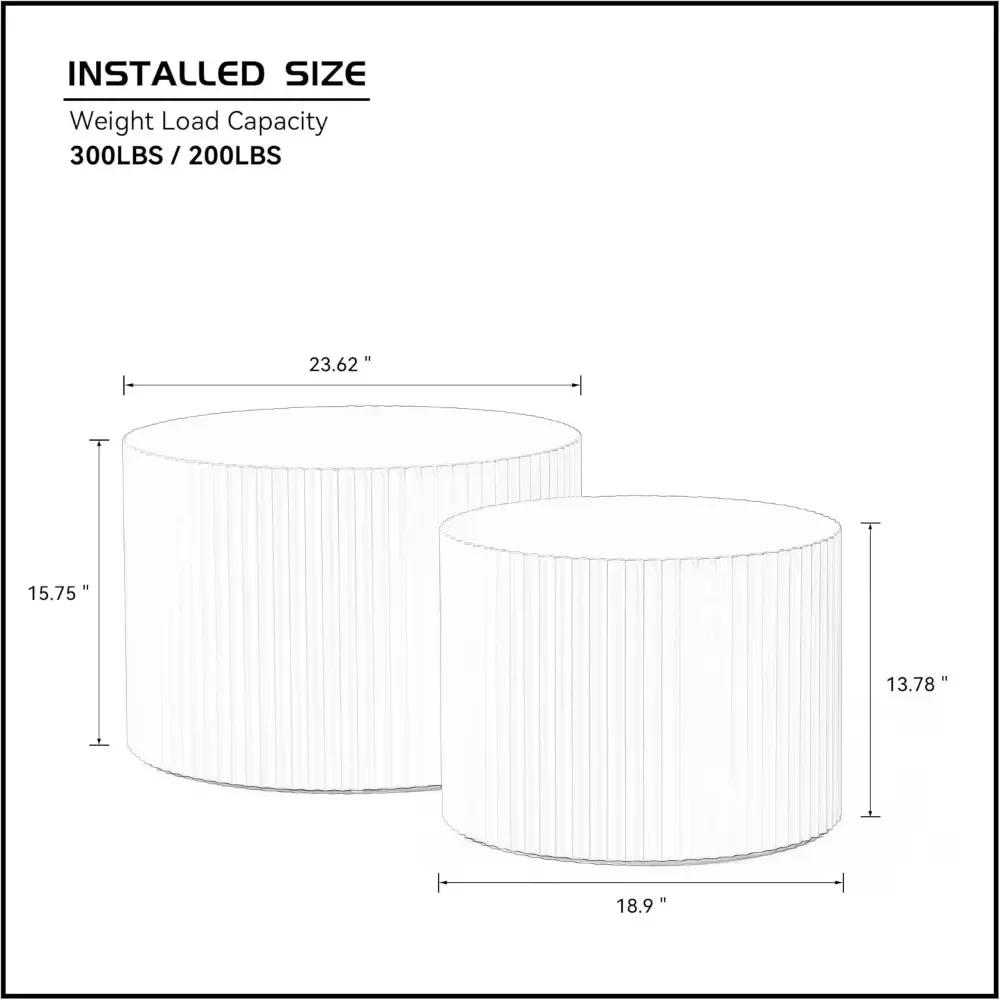
Material Mastery: The Heart of Danish Coffee Table Design
The soul of any Danish coffee table resides in its materials, with wood selection and treatment being particularly crucial elements that define its character. Understanding these materials helps appreciate the craftsmanship behind these enduring pieces.
Oak
The quintessential Danish wood choice, oak brings natural brightness and remarkable durability. Its prominent grain pattern adds visual interest without overwhelming minimalist aesthetics. Oak tends to mellow to a golden honey tone over time, developing a rich patina that tells the story of its use.
Teak
Prized for its natural oils and resistance to moisture, teak delivers incomparable longevity and a smooth, silky texture. Its warm reddish-brown tones darken slightly with age, creating depth and character. The Danish coffee table construction craft often showcases teak’s natural properties without excessive finishing.
Walnut
With its deep, chocolate tones and striking grain patterns, walnut coffee tables provide sophisticated contrast in minimalist spaces. Walnut has natural variations that create visual depth, making each piece unique while maintaining the clean lines essential to Danish design.
Beech
Lighter and more uniform than oak, beech offers a contemporary brightness that works beautifully in smaller spaces. Its tight, subtle grain pattern provides a more consistent appearance that appeals to those seeking refined simplicity.
What distinguishes Danish furniture making is the profound respect for these materials. Rather than forcing wood into unnatural forms, Danish designers work with the material’s inherent properties, highlighting grain patterns and embracing the natural aging process that makes each table increasingly beautiful over time.
The Perfect Proportions: Choosing the Right Size and Shape
Selecting the ideal Danish coffee table for your space requires careful consideration of proportions and scale. The perfect table should maintain balance with surrounding furniture while providing adequate functionality for your specific needs.
When considering height, most Danish coffee tables fall between 16-18 inches (40-45 cm), positioned slightly lower than standard American designs. This lower profile creates a more relaxed, informal feeling appropriate for minimalist spaces while remaining practical for everyday use. The ideal height typically falls 1-2 inches below your sofa’s seat cushion.
For length, the classic rule suggests selecting a coffee table approximately two-thirds the length of your sofa. This proportion creates visual harmony while ensuring the table remains functionally accessible from all seating positions. In compact spaces, the best shape coffee table for small space is often round or oval, eliminating sharp corners that interrupt flow.
Appropriate clearance around your coffee table is essential for both aesthetics and functionality. Allow at least 18 inches (45 cm) between the table and surrounding seating, providing comfortable leg room while maintaining an intimate conversation distance. For high-traffic areas, consider increasing this clearance to 24 inches (60 cm) or exploring mid-century modern small coffee tables designed for more compact arrangements.
Different shapes serve distinct purposes in minimalist design:
- Rectangular tables provide maximum surface area and pair beautifully with standard sofas
- Round tables create a sense of flow and facilitate conversation in seating arrangements
- Oval designs combine the benefits of both rectangular and round tables
- Organic or asymmetrical shapes introduce subtle visual interest while maintaining minimalist principles
The key is selecting proportions that respect the scale of your room while providing appropriate functionality for your lifestyle needs.
Styling Your Danish Coffee Table the Minimalist Way
The beauty of Danish coffee tables lies not just in their design but in how they’re styled within minimalist spaces. The challenge is finding the perfect balance between functionality, visual interest, and maintaining negative space—the empty areas that give minimalist design its distinctive breathing room.
When styling your Danish coffee table, embrace the “less is more” philosophy with intention. Rather than filling the surface with decorative objects, select a few meaningful pieces that serve as focal points. This might include:
- A single sculptural object with organic form
- A carefully selected art book or small stack (no more than three) of meaningful publications
- A low, wide vessel in ceramic or glass with simple lines
- A small plant bringing subtle life and texture without visual clutter
The minimalist approach to styling involves creating intentional asymmetry. Rather than centering objects or distributing them evenly, place them in a thoughtful arrangement that leaves portions of the table surface visible. This strategic use of negative space allows the table’s design to remain prominent while accommodating practical needs.
Scandinavian Danish coffee table design emphasizes function alongside form. Consider how your coffee table serves daily activities—perhaps a discrete coaster for beverages, a single drawer for storing small essentials, or a lower shelf that can house additional books without cluttering the main surface.
Remember that minimalism isn’t about absence but about thoughtful curation. Each item on your coffee table should serve either a practical purpose or provide meaningful visual interest—ideally both—while maintaining the serene simplicity that makes minimalist spaces so appealing.
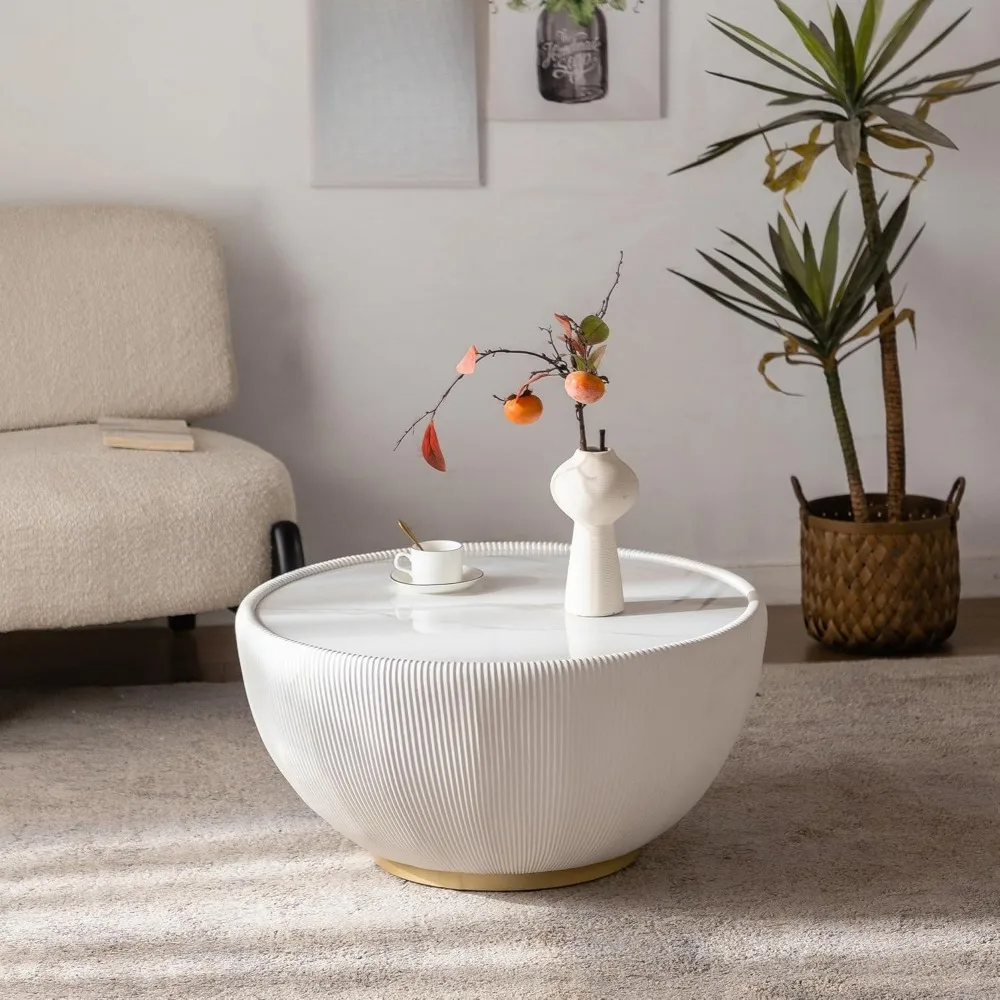
Versatility in Design: Different Danish Coffee Table Styles
The world of modern Danish coffee table design offers remarkable diversity while maintaining core principles of simplicity and functionality. Understanding these variations helps you select the perfect piece for your minimalist home.
Solid Surface Tables
The most iconic Danish coffee tables feature uninterrupted solid surfaces that showcase the beauty of natural wood. These pieces typically have tapered legs and subtle edge detailing, allowing the material itself to be the focus. Their simplicity makes them incredibly adaptable to various interior styles, from purely minimalist to eclectic spaces with minimalist tendencies.
Storage Solutions
Danish design ingenuity shines in coffee tables that incorporate subtle storage without compromising clean lines. Look for designs with slim drawers that seem to disappear into the table’s profile or cleverly integrated compartments that maintain the table’s streamlined appearance while providing practical functionality.
Nesting Tables
Nesting coffee tables represent Danish design’s commitment to versatility and space efficiency. These adjustable arrangements typically feature tables of graduated sizes that can be separated for flexible use or nested together to minimize their footprint. They’re particularly valuable in smaller living spaces where adaptability is essential.
Leg Variations
The distinctive character of many Danish coffee tables comes from their leg design. Tapered legs create visual lightness while providing stability. Hairpin metal legs offer industrial-influenced minimalism. Solid wood legs with subtle joinery details showcase craftsmanship. Each variation maintains the essential Danish principle of form following function while creating subtle differentiation.
What unites these diverse styles is their commitment to honest materials and proportions that feel intuitively right. Whether sleek and contemporary or warm and organic, Danish coffee tables share an underlying design integrity that makes them enduringly appealing in minimalist homes.
Complementary Furniture: Creating a Cohesive Minimalist Living Area
Creating a harmonious minimalist living space requires thoughtful coordination of furniture pieces that complement your Danish coffee table without creating visual competition or clutter.
Sofa Selection
The ideal sofa pairing maintains similar design principles—clean lines, visual lightness, and quality materials. Low-profile sofas with slim arms and exposed legs create air and space around them, complementing rather than overwhelming your coffee table. Consider neutral upholstery in natural fibers that age gracefully alongside your wooden table.
Supporting Cast
Mid-century modern coffee and end table sets offer cohesive design language throughout your living area. Rather than identical matching pieces, look for side tables and accent pieces that share proportional relationships and material palettes with your coffee table. This creates visual connection without the rigidity of matching sets.
Lighting Elements
Lighting plays a crucial role in highlighting the beauty of Danish wood furniture. Consider floor lamps with adjustable arms that can illuminate your coffee table during evening hours, creating warm pools of light that enhance the wood’s natural warmth. Pendant lighting with simple geometric forms complements Danish design principles without competing for attention.
Mid-Century Modern Solid Wood Coffee Tables, Mid-Century Modern Teak Coffee Tables
$879.95 Select options This product has multiple variants. The options may be chosen on the product pageMid-Century Modern Danish Coffee Tables, Mid-Century Modern Oval Coffee Tables, Mid-Century Modern Solid Wood Coffee Tables
$390.05 Select options This product has multiple variants. The options may be chosen on the product pageMid-Century Modern Coffee & End Table Sets, Mid-Century Modern Coffee Table Sets, Mid-Century Modern Oval Coffee Tables
Price range: $257.48 through $331.04 Select options This product has multiple variants. The options may be chosen on the product pageMid-Century Modern Nesting Coffee Tables, Mid-Century Modern Nesting Table Sets
$361.45 Select options This product has multiple variants. The options may be chosen on the product pageMid-Century Modern Oval Coffee Tables, Mid-Century Modern Solid Wood Coffee Tables
$679.56 Select options This product has multiple variants. The options may be chosen on the product pageMid-Century Modern Nesting Table Sets, Mid-Century Modern Round Coffee Tables
$462.57 Select options This product has multiple variants. The options may be chosen on the product page
Textural Balance
While minimalism emphasizes visual simplicity, textural variety prevents spaces from feeling flat or sterile. Consider a low-pile area rug with subtle pattern beneath your coffee table, creating soft contrast with the wood while defining the conversation area. Natural fiber textiles like wool, linen, or cotton complement the honest materials of Danish furniture.
The most successful minimalist living areas achieve visual cohesion not through matching pieces but through thoughtful proportion and consistent design principles. Your Danish coffee table should feel like an integral component of the space rather than an isolated statement piece.
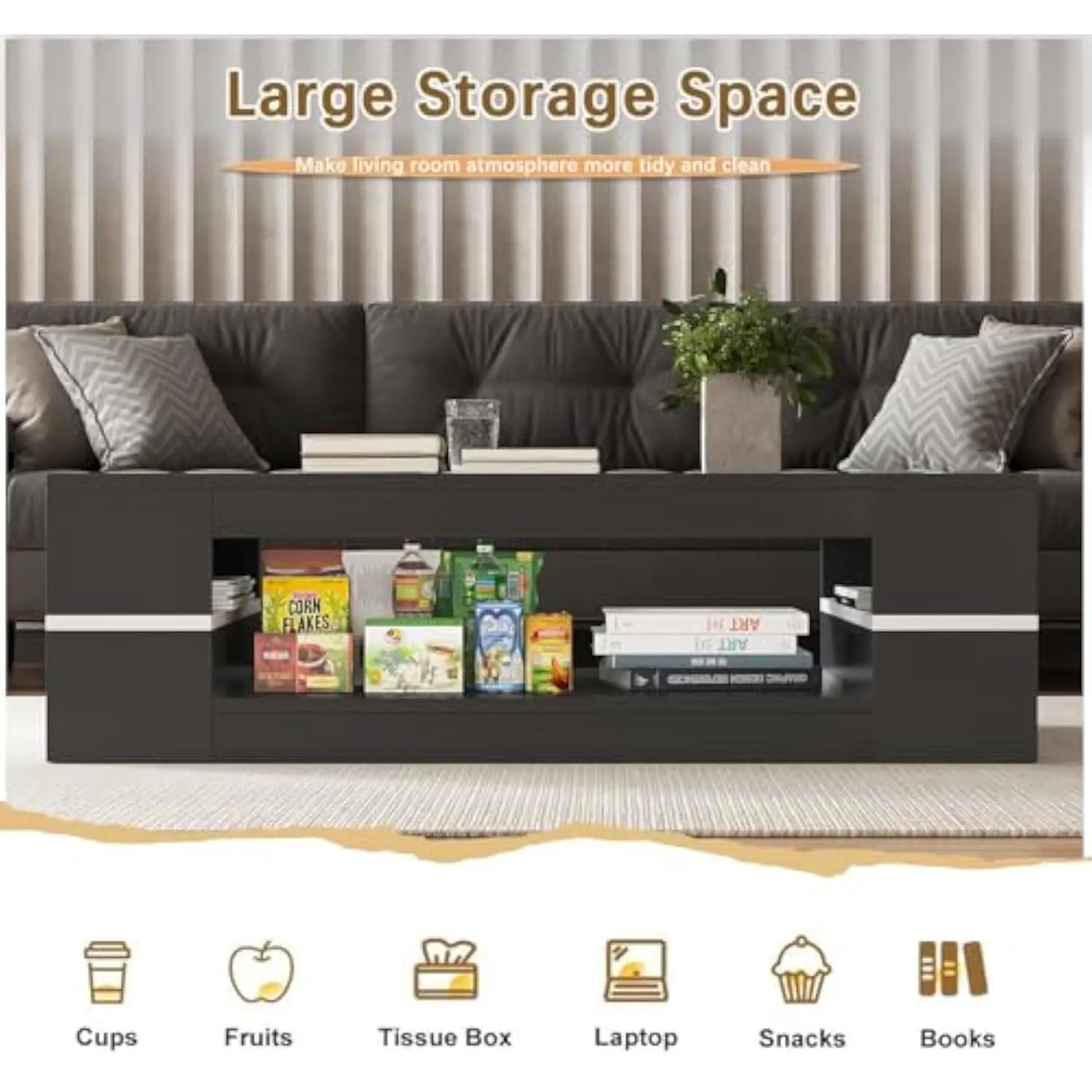
Care and Maintenance: Preserving Your Danish Coffee Table’s Beauty
The longevity of Danish coffee tables stems not just from their quality construction but also from proper care. With minimal effort, these pieces can maintain their beauty for generations, developing character rather than deterioration.
For daily maintenance:
* Dust regularly with a soft, dry cloth, following the direction of the wood grain
* Clean spills immediately, using a slightly damp cloth followed by immediate drying
* Use coasters for beverages and trivets for hot items to prevent water rings or heat marks
* Rotate decorative items periodically to ensure even patination across the surface
Deeper care considerations include:
* Apply quality wood oil or wax polish every 6-12 months to nourish the wood
* Position your table away from direct sunlight to prevent uneven fading
* Maintain consistent indoor humidity levels to prevent wood expansion and contraction
* Address minor scratches quickly with appropriate wood touch-up products
Understanding the natural aging process helps you appreciate how Danish coffee tables evolve over time. Oak and beech typically darken slightly, while teak and walnut may mellow in tone. This natural patina represents the living quality of wood that makes identifying Danish-inspired coffee tables so fascinating—they improve with age rather than deteriorate.
When moving your table, always lift rather than drag it, and periodically check leg joints for stability, tightening any hardware as needed. These simple maintenance habits ensure your Danish coffee table remains both beautiful and functional for decades.
Japandi Fusion: Where Danish Minimalism Meets Japanese Aesthetics
The natural evolution of minimalist design has led to an intriguing fusion known as “Japandi”—a harmonious blend of Danish and Japanese aesthetic principles that feels both fresh and timeless. This design approach celebrates the shared values between these distinct traditions: simplicity, natural materials, and reverence for craftsmanship.
Danish coffee tables fit seamlessly into Japandi interiors, where their clean lines and honest materials complement Japanese elements like low-profile furniture, natural textiles, and asymmetrical arrangements. The Japandi style often features Danish tables with slightly darker finishes or more dramatic grain patterns, creating subtle focal points in otherwise serene spaces.
What makes this fusion particularly compelling is how it balances Danish warmth with Japanese restraint. While Danish design emphasizes comfort and conviviality, Japanese aesthetics bring mindfulness and intentionality to space arrangement. Together, they create living environments that feel both peaceful and inviting—minimal without austerity.
The wabi-sabi concept—finding beauty in imperfection and transience—pairs beautifully with the natural variations in Danish woodworking. Rather than hiding knots or grain variations, both traditions celebrate these characteristics as unique expressions of natural materials. Understanding how mid-century vs. mid-century modern furniture influences these hybrid styles helps create more intentional living spaces.
As minimalist design continues evolving, Danish coffee tables remain remarkably adaptable, proving their timeless versatility in both traditional Scandinavian interiors and these emerging fusion aesthetics.

